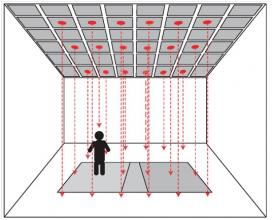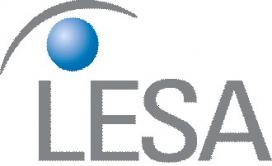ERC Team Awarded Patent for Occupancy Detection Using Lights Instead of Cameras
A team at the Center for Lighting Enabled Systems & Applications (LESA), an NSF-funded Engineering Research Center (ERC) headquartered at the Rensselaer Polytechnic Institute (RPI), have been awarded a U.S. patent for a method of using LED lights instead of cameras to detect the presence, pose, and location of a room’s occupants.
This privacy-preserving approach detects occupancy using time-of-flight (ToF) sensing. ToF sensors measure light and physical distance, facilitating mapping of the space, and determine the location as well as height (sitting, standing, prone) of individuals and other objects in the room. Applications include lighting, healthcare, building management, horticulture, and wireless communications.
The privacy-preserving benefit of the technology makes it attractive for use in almost any setting. The technology is cost effective because it can draw from existing LED lighting systems already in place.
Every illuminated space has an optical fingerprint based on the distributions of light and color in the space. Using a limited number of low-cost sensors mounted on the ceiling, the Center’s researchers can measure the optical fingerprint of any space and determine when and how things move within it.
To further develop and demonstrate the new technology, LESA has created two prototype testbeds, the “Smart Conference Room,” operated at RPI, and the “Smart Hospital Room” located at the University of New Mexico. The testbeds are dedicated to taking LED lighting to new levels of cost-effective data generation and control using only the properties of the light itself. Ultimately, LESA’s goal is to integrate the time-of-flight sensors along with other low-cost sensing technology, control software, and machine learning capability into the testbeds’ LED fixtures themselves.



